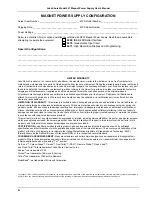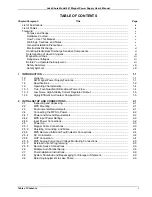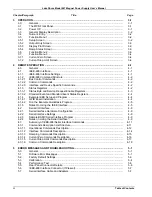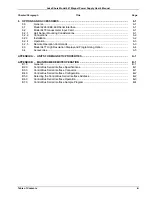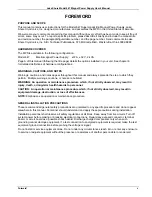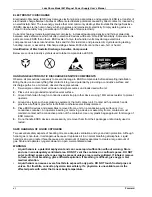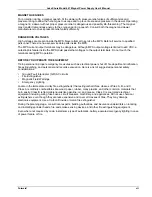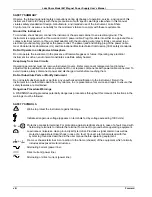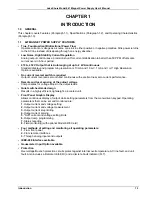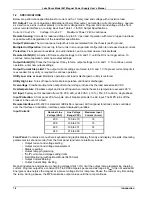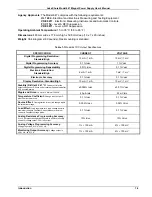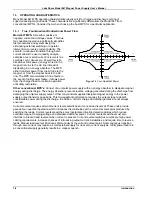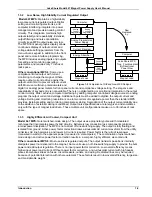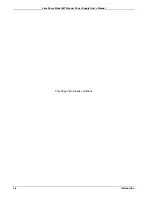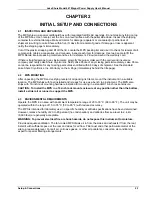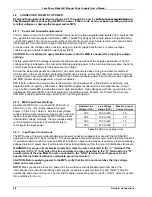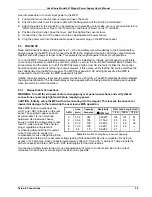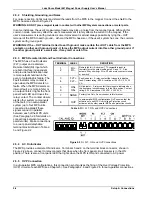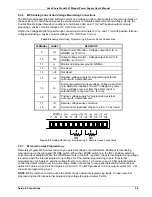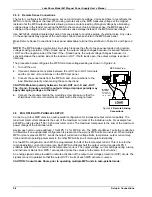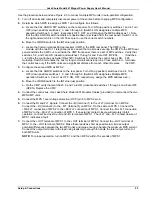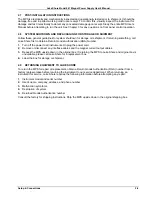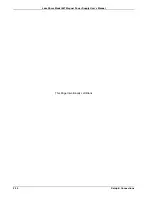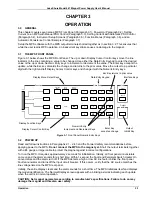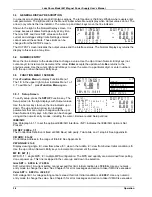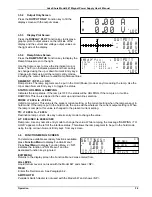
Lake Shore Model 647 Magnet Power Supply User’s Manual
Introduction
1-4
1.3 OPERATING
CHARACTERISTICS
Many Model 647 MPS operating characteristics ideally suit it for charge and discharge cycling of
superconducting magnet loads. These characteristics significantly differentiate the Model 647 from
conventional MPS's. Consider them when choosing the best MPS for a particular application.
1.3.1 True, Four-Quadrant Bi-directional Power Flow
Model 647 MPS:
Sets either positive or
negative current and voltage values. This true,
four-quadrant operation significantly simplifies
test procedures and system design by
eliminating external switching or operator
intervention to reverse current polarity. The
smooth, continuous transition through zero
current allows the user to readily analyze
samples at very small current increments (as
small as 1 mA) about zero. Power flow is bi-
directional. Sink power (energy stored in the
magnet) returns to the AC line instead of
dissipating in an energy absorber. The MPS
either transfers power from the AC line to the
magnet, or from the magnet back to the AC
line. The MPS also tolerates AC line faults; in
the event of utility power failure, it draws power
from the charged load to maintain operation
until utility restoration.
Other conventional MPS's:
Consist of a unipolar power supply with an energy absorber to dissipate magnet
energy during discharge. The energy absorber prevents reverse voltage generated during the discharge from
damaging the unipolar supply output. Other conventional supplies dissipate magnet energy in the power
supply output transistor pass-bank. This two-quadrant performance requires the output stage to absorb
considerable power during the discharge. In addition, uniform charge and discharge rates are not always
ensured.
Current reversal requires external current reversal switches or manual lead reversal. These units provide
pseudo-four-quadrant operation which introduces discontinuities at the current reversal point produced by
switching the leads. Current reversal switches may incorporate direction detection diodes which reduce
available magnet charging voltage and dissipate additional power. Current reversal switches must also
interlock to prevent lead reversal when current is present. Current reversal switches complicate high power
cabling requirements, increase chances of introducing output current instabilities, and require time to reverse
leads. Manual lead reversal introduces discontinuity at the current reversal point. A discontinuous transition
through zero current may require a small external supply for near zero current analysis. Utility power failure in
a conventional supply generally results in a magnet quench.
Figure 1-1
Four-Quadrant Power


